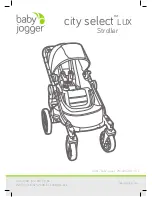
4
1
2
3
5
6
7
8
9
10
2-6
Chapter 2 SYSTEM OVERVIEW
Chapter 2 SYSTEM OVERVIEW
2-7
4. Basic sequence from installation to operation
The basic sequence from installation to actual operation is shown below. Refer to this sequence
to use the RCX240 safely, correctly and effectively. Before beginning the work, read this user's
manual thoroughly.
4.1 When using absolute type axes only
Install the controller.
• Make cable and connector connections.
• Ground the controller.
• Configure an emergency stop circuit.
Start operation.
Check that the safety devices such as an emergency stop circuit function correctly.
Make a trial run using step operation and make adjustment as needed.
Check that the wiring and supply voltage are correct and then turn power on.
Check that no alarm is issued after turning power on.
Robot type check
Absolute reset Perform absolute reset to teach the origin position to the
controller.
Parameter setting Set parameters according to the operation conditions.
Programming
Create programs according to the robot operation.
Point data editing Create or edit point data according to the robot operation.
Parameter initial
setting
Set the following parameters to optimize the robot operation.
• Tip weight (workpiece tool weight)
* Set the "Axis tip weight" parameter if the robot is set to
"MULTI" or has an auxiliary axis.
* Before determining soft limit positions by jog movement,
return-to-origin must first be complete.
* Always set this parameter when using the robot for the
first time. After that, change it as needed.
* Always perform absolute reset when using the robot for
the first time. After that, reperform it only when the origin
position becomes indefinite (return-to-origin incomplete).
For SCARA robots:
Set the reference coordinates (XY coordinate system with the
X-axis rotation center set as the origin).
* Programming is unnecessary if not using a program
such as in operation with I/O commands.
Basic procedure
Refer to:
4. Turning power on and off
13. Checking the robot
controller operation
12. "SYSTEM" mode
(Robot type can be
checked on the initial
screen in SYSTEM mode.)
12.1 Parameters
9.1 Automatic operation
9.6 Changing the automatic
movement speed
10. "PROGRAM" mode
See the programming
manual for information
about the programming
language.
11.2 Displaying and editing
point data
11.3 Displaying, editing and
setting pallet definitions
11.9 Absolute reset
11.10 Setting the standard
coordinates
12.1.3 Robot parameters
• Tip weight
12.1.4 Axis parameters
• + Soft limit
• - Soft limit
• Axis tip weight
9.2 Stopping the program
9.12 Executing the next step
Installation, connection and wiring
Power ON
Initial setting
Data setting
Trial operation
Operation
Installation, connection and wiring
Power ON
Initial setting
Data setting
Trial operation
Operation
See the serial I/O instruction
manuals for detailed
information.
1. Unpacking
12. Precautions for cable
routing and installation
PARALLEL I/O INTERFACE
SAFETY I/O INTERFACE
Chapter 3
Chapter 6
Chapter 7
Chapter 4
Chapter 3
Chapter 4
Chapter 4
Chapter 4
Chapter 4
~
~
~
• Soft limits (movement range)
When a serial I/O board is added:
Set the station number, communication speed, etc. (Setup
depends on the serial I/O type.)
Check that the robot type setting in the controller matches
the robot that is actually connected.
4. Basic sequence from installation to operation
Содержание RCX240
Страница 1: ...RCX240 EUR6127206 E107 Ver 2 06 Userʼs Manual YAMAHA 4 AXIS ROBOT CONTROLLER ...
Страница 2: ......
Страница 18: ......
Страница 34: ......
Страница 78: ......
Страница 402: ......
Страница 448: ...5 46 Chapter 5 TWO ROBOT SETTING MEMO ...
Страница 450: ......
Страница 480: ...6 30 Chapter 6 PARALLEL I O INTERFACE MEMO ...
Страница 482: ......
Страница 494: ......
Страница 506: ......
Страница 512: ......
Страница 522: ......
Страница 611: ...INDEX ...
Страница 612: ......
Страница 617: ......
Страница 619: ......















































